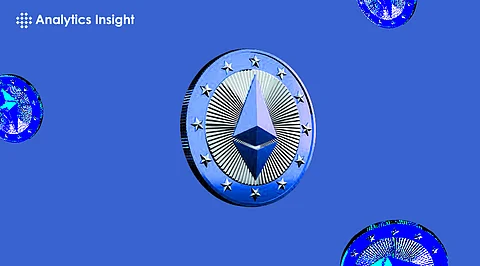

Ethereum Price Prediction: Ethereum, the second-largest cryptocurrency by market capitalization, continues to capture attention for its pivotal role in decentralized finance (DeFi), smart contracts, and non-fungible tokens (NFTs). Its price dynamics often mirror market trends while carving unique trajectories due to its innovative ecosystem. This analysis delves into Ethereum’s current performance, key technical indicators, and future predictions.
As of November 26, 2024, Ethereum price stood at $3,325, experiencing a 2.6% decline in 24 hours. Trading volumes reached $339.31 million, reflecting active participation despite the pullback. The broader market sentiments reveal cautious optimism, with Bitcoin’s recent correction and significant liquidations influencing the overall market tone.
Ethereum’s current technical landscape shows a mixed picture. Key indicators such as moving averages (MA), the Relative Strength Index (RSI), and resistance/support levels provide valuable insights into its potential price movement.
Ethereum’s 50-day and 200-day moving averages indicate short-term volatility but maintain a long-term bullish trend. The recent break below the 50-day MA at $3,382 could signal further short-term downside pressure. However, the 200-day MA support at $3,200 remains a critical level to watch.
The RSI currently hovers around 63.26, signaling a neutral zone but leaning towards overbought conditions during previous sessions. The slight decline in RSI reflects a cooling-off period after Ethereum's recent rally.
Immediate Support: $3,300 and $3,200 levels are pivotal for maintaining bullish momentum. A breach below $3,200 could push Ethereum toward $3,000.
Key Resistance: Ethereum faces resistance at $3,400 and $3,500. A breakout above $3,500 may pave the way for a retest of $3,800.
The overall cryptocurrency Fear and Greed Index fell to 79, indicating neutral sentiment cooling off from previous greed-dominated levels. Ethereum’s recent price movements align with a cautious market outlook.
On-chain data reveals consistent accumulation by Ethereum whales, suggesting confidence in Ethereum’s mid-to-long-term value. Increased whale activity often precedes price rallies or stabilization during market corrections.
The continued adoption of Ethereum 2.0, featuring the proof-of-stake consensus mechanism, has enhanced network efficiency. Ethereum’s staking rewards contribute to reducing circulating supply, which could positively impact its price trajectory.
Ethereum’s dominance in the DeFi space remains unchallenged, with over 60% of DeFi protocols operating on its network. Layer 2 scaling solutions, such as Optimism and Arbitrum, are addressing scalability concerns, improving user experience and attracting more developers.
The NFT market, heavily reliant on Ethereum, is experiencing renewed interest. High-profile collaborations and projects leveraging Ethereum’s ERC-721 and ERC-1155 standards continue to drive demand.
Institutional adoption of Ethereum-based products, such as ETFs and staking services, is steadily rising. Recent data shows significant inflows into Ethereum trusts, highlighting growing confidence among institutional investors.
Bitcoin price movements often set the tone for the broader cryptocurrency market. Ethereum’s correlation with Bitcoin suggests that Bitcoin’s potential rebound from current support levels could positively influence Ethereum price.
Global regulatory clarity around cryptocurrencies, including Ethereum, will play a crucial role in shaping market sentiment. Positive developments could act as a catalyst for Ethereum’s growth.
Ethereum is likely to consolidate between $3,000 and $3,500 in the near term, depending on Bitcoin’s price stability and macroeconomic factors. A year-end rally could push Ethereum closer to $3,800 if market sentiment improves.
With the increasing adoption of Ethereum 2.0 and rising DeFi and NFT activity, Ethereum could target $4,500 to $5,000 by mid-2025. Institutional adoption and Layer 2 advancements will be critical drivers.
By late 2025, Ethereum has the potential to surpass $6,000, fueled by broader adoption, improved scalability, and reduced supply due to staking. Macro factors and global regulatory clarity will significantly influence this projection.
Scalability Challenges: Despite Layer 2 solutions, Ethereum faces competition from alternative Layer 1 blockchains like Solana and Cardano.
Regulatory Risks: Adverse regulations could hinder Ethereum’s growth, especially in key markets like the US and EU.
Market Volatility: As a high-beta asset, Ethereum remains vulnerable to sharp corrections during risk-off sentiment.
Ethereum’s robust ecosystem and continuous innovations position it as a cornerstone of the cryptocurrency market. While short-term volatility may persist, Ethereum’s long-term growth potential remains intact. Strategic investments in Ethereum 2.0, DeFi, and NFTs are likely to sustain its market leadership and drive future price appreciation. For investors and developers alike, Ethereum offers unparalleled opportunities in the evolving blockchain space.
